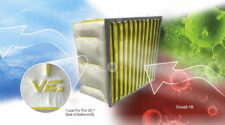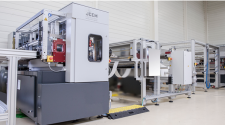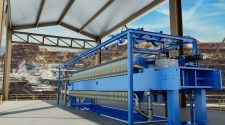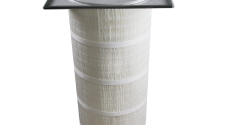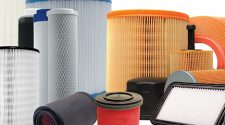In light of the recent coronavirus pandemic, it seems there is opportunity for technology development in the area of filtration to protect against the spread of airborne viruses. While there is some debate about how viable COVID-19 is as an airborne threat, the shortage of facemasks and supply chain challenges in acquiring needed raw materials highlight the potential limitations of this technology in meeting demand during a pandemic. Not to mention the waste generated with widespread use of single/limited-use facemasks over a prolonged period of time.
At a systems level, the commercial and residential HVAC technologies of today are not well equipped for filtering airborne viruses in the indoor environment. And systems for filtering viruses in the outdoor environment are also a point worth consideration.
All of this is to say, in a world where global pandemics of airborne viruses may be an inevitable reality, what could happen on the filtration technology development front to better protect the general public from the spread of such viruses in the indoor and outdoor environment? After we are past the current crisis and have emerged on the other side, will we be looking at a different air filtration industry; will this industry be able to reinvent and transform itself to deal with possible future pandemics?
These questions were posed to a group of subject matter experts, including those from the business side of the filtration industry and those in academia who study filtration. The following are the responses we received, which offer some insight on how the filtration industry will/should tranform post COVID-19.
Pawel Wargocki Associate Professor, International Centre for Indoor Environment, Technical University of Denmark
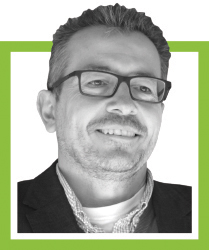
Pawel Wargocki graduated from the Warsaw University of Technology in 1990. He received his doctorate from the Technical University of Denmark in 1998, where he has been teaching and performing research ever since. He has more than 25 years’ experience in research on human requirements in indoor environments. He is best known for his seminal work, demonstrating that poor indoor environmental quality affects the performance of office work and learning. Other work influenced the requirements for ventilation and air cleaning. Recent research includes studies on emissions from humans, sleep quality, and performance of green buildings, as well as gas-phase air cleaning and air quality in aircraft. Presently he is a Vice-President of the Academy of Indoor Air Sciences. He has received several awards for his work, including the Rockwool Award for Young Researchers, ASHRAE Ralph Nevins Award, Environmental Health Award, and Distinguished Service Award, ISIAQ’s Yalow Award and Best Paper awards in Indoor Air.
You ask very important questions, yet very difficult to answer. We could reverse them and ask has the filtration industry done anything wrong and was unprepared to deal with the pandemic we are facing today?
I think that the technology is there and also that the knowledge is there. We can construct the filter that will be able to remove particles from the air and aerosols, having a very small size similar to include viruses and pathogens.
The two important matters are how to remove and inactivate the virus and how to reuse the filter material. Of course, with the second issue, it is essential to understand how long the filter can be in operation before it needs to be replaced or regenerated.
So what I see as one challenge for the filtration industry is to develop new filter materials that would allow inactivation of the virus and the quick filter regeneration. The latter issue can be used in connection with any type of particle filtration, not only viruses or pathogens.
The two important matters are how to remove and inactivate the virus and how to reuse the filter material.
The two other challenges that I think need to be addressed are to develop portable air filtration units that are much more effective than the ones used at present. And also how to ensure that filtration would be targeted and will only remove germs, leaving the probiotics in the air. In other words, how to make sure that the filtering will not destroy the microbiome. The latter may take much more time to respond. The former could allow quick responses and adaptation to the risks, not only in the case of an epidemic or pandemic, but in case of any other events that would require quick filtration. It would allow quick retrofits in cases where there are no ventilation systems.
Finally, yet another matter that certainly needs to be addressed by the filtration industry in the future is the removal of gaseous pollutants from the air. Much more effort and investment is needed to advance technologies in this area.
Scott L. Tennison, Director of Filtration and Protective, Kimberly-Clark Corporation

Scott Tennison has been in the Consumer Packaged Goods industry for more than 20 years, working with both large manufacturing companies and retailers on a variety of businesses in both hardlines and grocery as well as retail planning and design. Scott has been with Kimberly-Clark for over 12 years where his teams have helped to develop and launch new innovations in both B2C and B2B across many categories, with core focus on nonwoven technologies. Scott has been strongly involved with Kimberly-Clark’s filtration technology for eight years and was named Director of Filtration and Protective in late 2019, moving from his previous roll of Director of Innovation, SEC.
We all know – and certainly this has been validated by the current COVID-19 situation we are all in today – that global pandemics are a very real health concern, but I would like to take this one step farther … What we are all trying to provide, and what we in the industry should be focused on, is overall healthy indoor air quality every day.
The overall health risk due to poor air quality is more than just the spread of these viruses during global pandemics. Everything from heart issues and birth defects to a full range of respiratory illnesses have been directly linked to the quality – poor quality to be exact – of air that people are breathing day in and day out. We need to continue to tell the story and push the importance of healthy indoor air daily, not only during times of global pandemics.
With that said, I do believe that the COVID-19 situation has put a very public lens on how microscopic particles in the air can affect our health, and this will impact the future of filtration in this post COVID-19 new normal. There is a growing awareness of IAQ and critical filtration in both commercial buildings and residential homes.
Higher MERV-rated products that can filter out the very smallest particles I believe will be the largest growth segments along with HEPA filtration. Personally, I believe that MERV 13 and above will be the new demand growth for both residential and commercial filtration in pleated media. Bag media and mini pleats will also look to MERV 13 and up to MERV 16 to deliver the best air quality in locations that use these types of filtration devices.
I know my comments might drive some concerns with our HVAC equipment manufacturing friends, but we must find the solution and create the balance between high efficiency performance and pressure drop. Kimberly-Clark, which has been a long-time leader in the science and technology of filtration media, as well as other media producers, needs to match not only the new demand for healthy air quality but also deliver the lowest possible pressure drops to ensure the least amount of additional strain on the HVAC equipment as possible. Additionally, converters will need to partner with media manufactures that have the ability to service their needs, as well as the industry demands, during these times of global pandemics.
The overall health risk due to poor air quality is more than just the spread of these viruses during global pandemics.
I believe that filtration is a critical business during these types of health crises. Supplying HVAC filtration devices that can help deliver healthy indoor air in hospitals, nursing homes, retailers, restaurants, schools, manufacturing facilities, our homes and basically anywhere people are is more critical than ever. Your filtration media suppliers need to have the ability to keep you supplied as your finished filtration products are key to keeping us healthy and the economy moving.
The short answer to the question is a resounding YES. I do believe the industry will have a shift, and we in the industry need to be ready to meet that shift with science, technology and performance levels that will balance the new demand for high-efficiency filters for healthy air quality without the additional strain and increased energy usage on the HVAC equipment.
J. Timothy Toolen & Mark King, District Manager and President, Tri-Dim Filter Corp
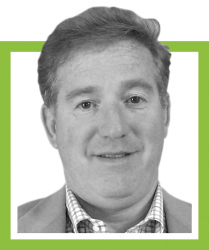
Timothy Toolen has been with Tri-Dim Filter Corporation for more than 30 years with managerial/marketing control in the metro New York City region. He holds a bachelor’s degree in Biology/Chemistry from Purdue University and a master’s degree in Pharmaceutical Engineering from NJIT. His area of expertise resides in high-purity environments and he works extensively with commercial office, property management firms, mechanical engineering consulting firms, institutions and the transportation sector.
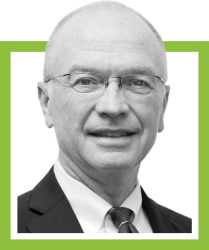
Mark King is a career veteran of Tri-Dim Filter Corporation, joining the team in 1989. Serving as president of Tri-Dim, King has an encouraging vision for Tri-Dim’s future as a complete indoor air quality company emphasizing innovative product, IAQ testing and sampling, as well as an extensive service and remediation department. King assumed leadership of Tri-Dim in 2018, and he played a crucial role in the acquisition of Tri-Dim by Mann+Hummel.
HVAC air filtration in the post-9/11 world looked exactly like the COVID-19 business climate does today. For a few short months, there was significant concern and discussion in the HVAC community, but soon thereafter the industry reverted back to business as usual. The HVAC design engineering and commercial real estate communities all behaved exactly the way we see them now. Ultimately, no long-term changes to HVAC design or increased demand for high-purity air filtration was sustained.
The current reactive climate, manifested as a need to employ product-based defenses to control the spread of an airborne virus will no doubt both challenge our industry and further define its leaders in the days ahead.
Unfortunately, the basic fact is this – HVAC systems are poor platforms for controlling the spread of airborne aerosolized contaminants.
Aside from healthcare, the public at large looks at air filtration as just something we have to do. For the moment, the COVID-19 pandemic has shifted the focus toward air filtration as a principal HVAC component. It remains to be seen if this new attention will bring lasting effects.
It should come as no surprise to anyone that manmade environments, people and their processes create ever-more burdening and dangerous concentrations of submicron particulate, which pollute the fragile world we all share. Quantifying the risk caused by human encounters with airborne pollution injected directed into our bloodstreams through the conduit of our lungs, has always been a challenge for our industry. The COVID-19 pandemic uniquely quantifies this risk.
At minimum, the devastation caused by our current situation underscores the challenge facing our industry, yet at the same time unveils the existing dichotomy where occupant comfort supersedes acceptance of minimum standards for air filtration. Perhaps now these needs will converge and be met with equal vigor.
Could we actually see the twilight of poor-performing “furnace type filters” in the marketplace? Will we finally make the needed investment in our schools to provide adequate ventilation to these facilities?
Unfortunately, the basic fact is this – HVAC systems are poor platforms for controlling the spread of airborne aerosolized contaminants.
We absolutely believe that the general population, as well as the world of epidemiology, has had an awakening to the role air filtration can play in risk reduction from the spread of viral contaminants. Tri-Dim was possibly the first company to employ the use of HEPA filtration and adapted negative-air equipment to control airflows and reduce risk of nosocomial infection over two decades ago when tuberculosis made a resurgence in the U.S. Filtration technology has also developed to the point where we can greatly reduce airborne contaminant in hospitals, schools and other populated areas of concern without sacrificing energy cost or air flow with relatively minor increases in lifecycle costs.
Tri-Dim was acquired in 2018 by Mann+Hummel, a world leader in automotive filtration. Almost prophetically Mann+Hummel has been working on equipment designed to clean air in large public spaces such as hospital waiting areas, subway terminals, etc. Employed appropriately, this equipment will greatly reduce airborne contamination. This really isn’t a complicated issue to us … cleaner air is healthier air.
Nathaniel Nance, Vice President of Global Research and Development-HVAC, AAF Flanders
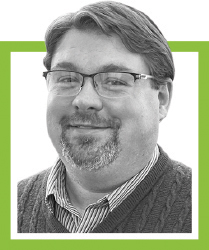
Nathaniel Nance is currently the vice president of Global Research and Development-HVAC for AAF Flanders. He has more than 18 years of experience in the filtration industry with specialties in filter testing and filtration application development fields with expertise in nonwoven filtration development. He has held several different positions within Research and Development and Operations for filtration materials and filter manufacturing companies. Nance has a master’s degree in Industrial and Systems Engineering from Auburn University.
The key to any drivers of change in this industry should be a mindset change of the entire industry. The industry is currently disjointed between filtration experts, universities, HVAC companies, contractors, regulators and local governments. The future of filtration that will evolve from this is these groups coming together to design, develop, and deliver real solutions.
The entire world is coming together in this time of crisis to develop innovative solutions in the face of critical shortages of crucial materials from facemasks to gowns to gloves. These are collaborative filtration solutions for focused areas, and this will be expanded to a broader scope of the filtration world. The what, how, when, and why of what makes a filter a filter will be reevaluated.
These changes to collaborations will lead to broader focused solutions. This will be everything from passive and on-demand filtration in hospitals and commercial buildings, where levels of filtration are selected and monitored in real time, to better filtration in the home for split systems, AHUs (Air Handling Units), and room air cleaners. All these will be held to a standard that confirms performance of the system for the application, not just a component-level qualification. This will require technology development to see the problem and monitor the solution from sensors and filter design changes, to system revamps that allow the consumer to select the level of filtration desired or required.
The indication of this change will be the increased reliance and public agreement on age old principles sorely forgotten and cast aside, such as proper gasketing to seal the system, solution by dilution, charged principles vs. mechanical filtration, and what is the true performance in the real system. The products that will come from this exercise will range from simple to complex, but what is clear is the future is bright for the filtration industry and there is no limit to its positive effects in mitigated risks now and in the future.
The hope of the industry is that the world comes through this crisis with a better understanding of how using filtration can protect and enhance the lives of the global population.
For instance, a system that has technology integration to the point where the fans, humidity, UV, recirculation, and filters are adjusted to a virus capture mode where maximum airflow and filtration is reached until biosensors within the system determine the predetermined air quality is reached. Filters that can change performance on demand to provide energy savings in clean environments and critical protection. A whole connected city filtration system that works in unison to push the virus out of the city or prevent the contaminant from even entering the area.
The hope of the industry is that the world comes through this crisis with a better understanding of how using filtration can protect and enhance the lives of the global population. We as an industry raise the bar and continue to exceed the expectations of the world’s customers to breathe clean air.
Andreas Scope, Ph.D., Director of Life Science Innovations, Mann+Hummel
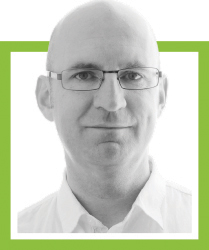
Andreas Scope, Ph.D., is director of Life Science Innovations for Mann+Hummel. He has more than 15 years of experience in air filtration and gas adsorption. He can be reached at andreas.scope@mann-hummel.com.
There is definitely a raised awareness for air quality, especially when it comes to indoor environments like homes and offices, store rooms, hospitals, doctor’s offices and vehicle cabins. We already see an increasing demand for highly efficient filtration products. There are initiatives to transfer and adapt cleanroom filtration technologies to other applications, like the equipment of hospital building HVAC systems with HEPA filters and negative or positive-pressure concepts for isolation rooms. Stand-alone air cleaner units can be a feasible and effective solution to retrofit rooms with a high-efficiency filtration system for better protection against airborne viruses.
On the other hand, there are a lot of applications where it is not easy to upgrade a standard filter to significantly higher separation efficiencies because of limitations in differential pressure, fan power, energy consumption, noise levels or installation space. From our point of view, these use cases are the most interesting challenge for the filtration industry.
We are working on intelligently designed filter media, which combines low media resistance with the highest possible separation efficiency. Electrostatically charged media and tribo-electret media will continue to play an important role in residential and consumer applications. Biofunctional coatings of filter media, like our Frecious Plus product range, offer a great potential to enhance the efficacy against micro-organisms and also viruses, as long as the coatings are properly validated under conditions which are representative for air filter environments.
In addition, modern simulation and CFD (computational fluid dynamics) tools enable advanced filter element and system designs for perfect utilization of filter media area at the lowest pressure drops.
A big potential for balancing air quality management, equipment maintenance and energy savings lies within broader use of sensors, data analytics and IoT (Internet of Things).
A big potential for balancing air quality management, equipment maintenance and energy savings lies within broader use of sensors, data analytics and IoT (Internet of Things). With our qlair product suite, continuous air quality monitoring can be used to identify critical areas and patterns in indoor air quality and to select appropriate mitigation solutions. Combined with tracking and analyzing filter performance over time and the usage of an optimized ventilation schedule based on real data, “Clean Air as a Service” with access to a large portfolio of filtration products, filter delivery on time and guaranteed air quality will be provided.
Feng, Xin, Research Fellow/Chief Engineer, Air Cleaning Techcenter(ACT), China Academy of Building Research
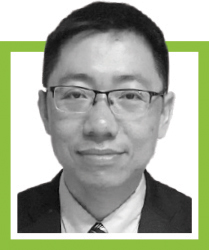
Feng, Xin is a research fellow and the chief engineer for the Air Cleaning Techcenter (ACT) of the China Academy of Building Research. He also serves as the secretary of the subcommittee on air cleaning equipment of Chinese national standardization technical committee of HVAC and air cleaning equipment (SAC/TC 143/SC6), as well as the working group convener of Chinese national standards GB/T 13554 (HEPA filters), GB/T 6165 (Performance test methods for HEPA and ULPA filters – Efficiency and air resistance), and JG/T 497 (Exhaust HEPA filtration units). His research is focused on air filtration, contaminant control and cleanroom technology. He has published more than 30 papers.
First of all, when we talk about the “airborne” microorganism such as a virus/bacteria, it is well accepted that only very few microorganism, some fungi spores and pollens, could be separately suspended in the air. Almost all virus and bacteria from human beings and animals would transfer in the air in particles much larger than their original size.
A previous study on foot-and-mouth disease (FMD) indicated that 65~71% viable aerosols released by the infected pigs were greater than 6 µm, 16~24% between 3 to 6 µm, and only 10~11% less than 3 µm, although the original size of FMD virus is just 25~35 nm (Sellers R.F., Parker J., 1969).
More recent research on SARS and influenza indicated that the droplet nuclei generated by the patients were normally 1 to 5 µm. General middle class ventilation filters would offer reasonable filtration efficiency for containment requirements.
Numerous research reports indicate that the bacteria and virus could survive in fibrous filter media for a long time, perhaps the whole lifecycle, under proper temperature and humidity conditions and when there is nutrient substance on the media.
But there are some questions and development that our filtration industry need to answer or figure out in the coming future:
1. Disinfection/sterilization of the viable virus/bacteria such as SARS-CoV-2 on filter media.
Numerous research reports indicate that the bacteria and virus could survive in fibrous filter media for a long time, perhaps the whole lifecycle, under proper temperature and humidity conditions and when there is nutrient substance on the media (Martikainen, P.J., Asikainen, A., Nevalainen, A. et.al., 1990; Neumeister, H.G., Moritz, M., Schleibinger, H. et.al., 1996; Kemp P et. al., 2001). The charge on synthetic fibers was proved that it could hinder survival and reproduction of the microorganism on the media (Wang Z, 1990).
Many attempts have been made by adding different antimicrobial agents on media. The frustrating reality is that during use of filters, the fibers would gradually be covered by dust particles. Such antimicrobial treatment, depending on the direct contact, would ultimately lose the efficacy.
In 2016, Zhonglin Xu presented that additional recirculation and heating pipe system for air handling units (AHU) with about 60 C air for predesigned time would solve the mold problem, which also happens to be a solution for the current situation because we know that SARS-CoV-2 virus would be eliminated if exposed to no less than 56 C for about 30 minutes. But definitely more efforts should be made to find solutions.
2. Biosafety evaluation should be made for any technology trying to “kill” microorganism suspended in the air or collected by filter media
Let us take the UVGI (ultraviolet germicidal irradiation) technology for an example. UVGI has been proven to be effective to disinfect object surfaces for decades. However, several research reports indicate that less radiation of UVGI would lead to unexpected variation of target bacteria/virus. One of the concerns is the change of antibiotic resistance (Yanhua Chen, Hui li, Yiping Lu et al., 2006; Yan wang, Yao zou, Yinghua Zhang et al., 2010; Rong tong Sun, Mingyi Wang, Haie Gao, et al., 2009).
So in China the use of UVGI is highly limited for disinfecting flowing air because the radiation dose could not be guaranteed. And the most important concern is that necessary information about the variation frequency, direction (enhance or weaken the antibiotic resistance) is not clear. So we do think it is quite important to fully evaluate the biosafety risk before putting any such technology to the market.
3. Possibility of facemask reuse
The COVID-19 pandemic reminds us of the sudden huge requirements of PPE (like facemasks) in such a fast developing global pandemic. It is almost impossible for the filtration industry to make any timely response for the surging requirements experienced during this pandemic.
Since the facemask can only be used for hours and are designed for single-use, it is the time to figure out if the common sterilization methods would affect the filtration efficiency of the facemask, which depend on charged synthetic fibers to maintain filtration efficiency. Several recent research reports indicate that dry heat, steam would not reduce the efficiency, but spray of a disinfection agent, such as ethanol, would neutralize the charge and have a significant negative impact on filtration performance (Lei liao etc., 2020).
References
Sellers R.F., Parker J., The Journal of Hygiene, 1969, 67(4):671-677
Kemp P, Neumeister-Kemp H, Lysek G, et al., Atmospheric Environment, 2001, 35(28):4739-4749
Martikainen, P.J., Asikainen, A., Nevalainen, A. et.al., Indoor Air, 1990(3):203-206
Neumeister, H.G., Moritz, M., Schleibinger, H. et.al., Indoor Air, 1996(3):125-130
Wang Z, Aerosol Science & Technology, 1990,30(3):300-308
Zhonglin Xu, Wei Zhao, Ning Sun, A drying sterilization facility for air handling unit serving health care facilities, Chinese patent, Patent No. 201520478015.9 (In Chinese)
Yanhua Chen, Hui li, Yiping Lu et al., Chinese Journal of Antibiotics, 2006, 31(8):505-506 (In Chinese)
Yan wang, Yao zou, Yinghua Zhang et al., Impact of Ultraviolet irradiation on bacterial drug resistance, Chin J No socomiol, 2010, 20(21):3355-3363 (In Chinese)
Rong tong Sun, Mingyi Wang, Haie Gao, et al., Chinese Journal of Disinfection, 2009, 26(2):158-161 (In Chinese)
Lei Liao, Wang Xiao, Mervin Zhao, Xuanze Yu, Haotian Wang, Qiqi Wang, Steven Chu, and Yi Cui ACS Nano Article ASAP, DOI: 10.1021/acsnano.0c03597
Rahul Bharadwaj, Ph.D., Senior Applications Engineering Manager, Lydall Performance Materials
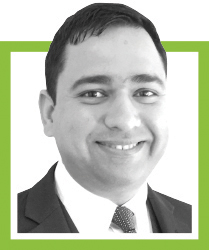
Rahul Bharadwaj, Ph.D., is Senior Applications Engineering Manager at Lydall Performance Materials. Prior to this he was the Global Product Development Manager at AAF Flanders. He has over 13 years of experience in research and development in media development and filter design. His areas of expertise involve filtration, separations, filter media, nanofibers and analytical testing. Dr. Bharadwaj is also the current Chair of American Filtration and Separations Society (AFS), a member of the IFN editorial advisory board, and a member of the AFS and World Filtration Congress Scientific committees, as well as a participant in several standards and research committees at ASHRAE and ISO, including ASHRAE 52.2, TC 2.4 and US TAG to ISO TC 142 (past committee chair). He has over 15 publications and proceedings in the field of filtration.
This global pandemic has forced the world to distinguish all things around us as essential and non-essential; whether it’s our day-to-day activities or the goods and services we consume, the places we travel to, etc., and all the various industries around the world.
Whether it was ramping up production for facemask media or developing filters for respirators and ventilators, or fulfilling an increased demand for HEPA and ULPA filters, the filtration industry has stepped up to the challenge of COVID-19.
Filtration and particulate matter experts from industry and academia have helped the world understand how the virus migrates via airborne particulates and how it can be captured with the right kind of filtration media/filters. One cannot possibly imagine dealing with this crisis without the products manufactured by our industry.
Filtration and particulate matter experts from industry and academia have helped the world understand how the virus migrates via airborne particulates and how it can be captured with the right kind of filtration media/filters.
It is difficult to predict what the air filtration industry will look like in the near future, but the world has surely realized the critical role our industry is playing in fighting this pandemic. Filter media, filter and some automotive manufacturers that have contributed their products to fight against this crisis have undergone accelerated innovation & development programs and have ramped up production to meet an unprecedented global demand. Furthermore, the global shortage of meltblown media has led our industry to look at other media technologies that can be used for respiratory protection instead of meltblown media.
No doubt we will come out of this stronger and better prepared if we have to deal with something similar in the future. I feel extremely proud to be a part of an industry that has worked behind the scenes to provide materials and products to all healthcare facilities, healthcare professionals and everyone else during this global crisis.
Ulrich Hornfeck, Ph.D., Board Member & Chief Commercial Officer, Sandler AG
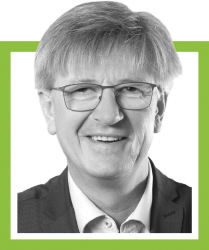
Having completed his studies of Chemistry and Economics and a doctorate in Physical Chemistry, Ulrich Hornfeck, Ph.D., joined Sandler AG in 1998. He concentrated on nonwovens for technical and hygiene applications while working in the company’s product development department. After being engaged in product management, he became Sales Director in 2002 and was promoted to Vice President of Sales, Logistics and Procurement in July 2009. On January 1st, 2012, Dr. Hornfeck was appointed a Board Member of Sandler AG.
In light of the COVID-19 pandemic, some key areas we at Sandler see for potential filtration technology development include:
• Use of a meltblown technology to generate extremely fine fibers to increase the mechanical separation performance of the resulting filter media and to avoid the need for electrostatic charging, but without compromising key parameters like pressure drop, energy efficiency or product lifetime.
• A specific functionalization – like we see with the use of silver or copper against bacteria or activated carbon against smell – may be leveraged to improve the performance of the final media.
Robust computer-based simulation and modelling tools should give the right guidance throughout the entire development process of custom-made filter media.
• Robust computer-based simulation and modelling tools should give the right guidance throughout the entire development process of custom-made filter media. The resulting filter media could be used for the next generation of pocket- or cabin-air filters, as well as mobile air cleaners, to protect against airborne viruses.
• In addition, smart filters used in cabin air filtration may enable improved filtration efficiency by activating a distinct filter class depending on the specific need for protection at a given point in time or based on the requirements of the operating environment.
Tom Justice, President, National Air Filtration Association, Owner, ZENE, LLC
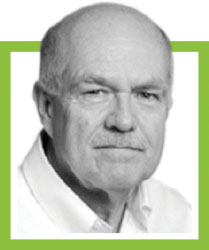
Tom Justice is the president of the National Air Filtration Association. In addition to his involvement with NAFA, Justice has served on a number of ASHRAE standards committees, been involved with ISO air filtration initiatives, and received lifetime achievement awards from NAFA and INDA, Association of the Nonwoven Fabrics Industry. Justice holds several patents related to air filtration, and he currently runs filtration consultancy, ZENE, LLC.
Since the onset of this most recent pandemic, we have seen an unprecedented escalation in the demand for air filters, for the specific purpose of increasing the filtration efficiency of existing systems. This activity has been driven more often by the need to isolate those individuals who have tested positive for the SARS-CoV-2 virus and risk infecting others, but also by the need to protect those who are most vulnerable – individuals over age 60 as well as people of any age, with heart conditions, asthma, autoimmune diseases, lung disease, and diabetes. So as one might expect the activity has centered around hospitals, clinics, nursing homes, assisted and independent care facilities, etc. As the number of cases continued to increase, we saw a similar spike in the number of commercial facilities requesting that their air filters be upgraded as well.
We are not so much in a debate over whether or not HVAC systems were equipped to handle airborne viruses as we are over whether or not we were equipped to handle the sheer volume of patients who would require hospitalization in specialized facilities. Just recently, I was contacted by the hospital engineer of a small rural medical facility stating that “we have three isolation rooms which has been adequate over the years. But now I have been informed that 23 people at the local nursing home have tested positive.” The hospital was able to retrofit general patient rooms into Temporary Negative Pressure Isolation rooms (TNPI), but not without considerable expense. These are the same problems being faced by hospitals around the world.
When we reach the point that we have time to look back and evaluate how we could have been better prepared, I think that the discussion will focus on two areas as far as air filtration needs. The first, as mentioned above, is how we can better prepare to provide airborne infection isolation rooms (AIIR) in hospitals to handle the patient levels we have seen during this current pandemic. Hospitals are at the front lines in combating the current pandemic. Unfortunately, many hospitals were struggling financially before the coronavirus outbreak. Now they are faced with increased expenses that have been incurred in terms of meeting the surge in COVID patients, while experiencing decreased revenues from regular services such as elective surgeries. Hospitals are now faced with how to quickly turn general patient rooms into TNPI rooms. Money spent to date combating the SARS-CoV-2 could have been spent more effectively and efficiently over the past two decades providing AIIR’s for hospitals. Similar to systems set up to thwart biological terrorist attacks, these systems could have been designed to be brought on-line only when needed.
If air velocity at the register is insufficient to mix the air in the room and return it to the filter, then simply moving to a higher MERV-rated filter may have little or no effect.
The second area for debate should center around a question that I was first asked back in the 1980s. The question: “Why do we incorporate air filters into central HVAC systems?” The answer: “Because it is convenient.” The problem is that over the course of so many years, the answer has not changed, at least not here in North America.
In a recent ASHRAE research project conducted by the University of Toronto on 20 residential homes over a 12 month period, Jeffrey Siegel, Ph.D., stated that “In-situ measurements of filtration system effectiveness in residences is a strong function of the context (HVAC system and the home) in which it is placed.” The research further showed in a comparison between lab-tested and in-situ results that the lab-tested results were “generally an overestimation for the in-situ efficiency.” In other words, both the building and the HVAC system, not just the filter, were instrumental in how clean the air was in the living space.
We have to approach clean air from a systems perspective and not simply look at the performance of a filter in the laboratory. If air velocity at the register is insufficient to mix the air in the room and return it to the filter, then simply moving to a higher MERV-rated filter may have little or no effect. Or if filters are subservient to a thermostat and a temperature demand setting then the filters are little more than an afterthought to thermal comfort. I think that we will see more solutions involving room air cleaners (RAC), as we look to improve the overall effectiveness of air filters. We are already seeing such technologies being successfully used in the healthcare environment.
Medical historians tell us there have been nine influenza pandemics in the past 300 years. So that’s one every 30 to 35 years or so, or roughly three per century. But extrapolating from nine cases is far from a sure thing considering the amount of the investment that will have to be made to ensure that we are prepared for the next outbreak. However, what we do know is that there is an ever-increasing risk of global pandemics due to a number of factors, among those being a growing population, a trend toward urbanization and increased global travel. The United Nations reports that the number of mega-cities or cities with populations over 10 million people has almost tripled over the past 25 years and international tourism reached nearly 1.2 billion in 2015.
Along with the rush this year to upgrade systems to handle higher efficiency filters we have also experienced serious issues in meeting demand. For those who have upgraded their systems, it is highly unlikely that they will revert back to lower grade filters after the current pandemic has passed. And once businesses start slowly coming back online either in June or July, we will experience a second spike in demand, which I think will test the ability of our industry to fill the pipeline. These issues will pass, but hopefully not the debate over how to effectively prepare for the next outbreak. As far as the next pandemic we have 300 years of statistics, so it’s not a question of “if” but rather a question of “when” and “how bad.”


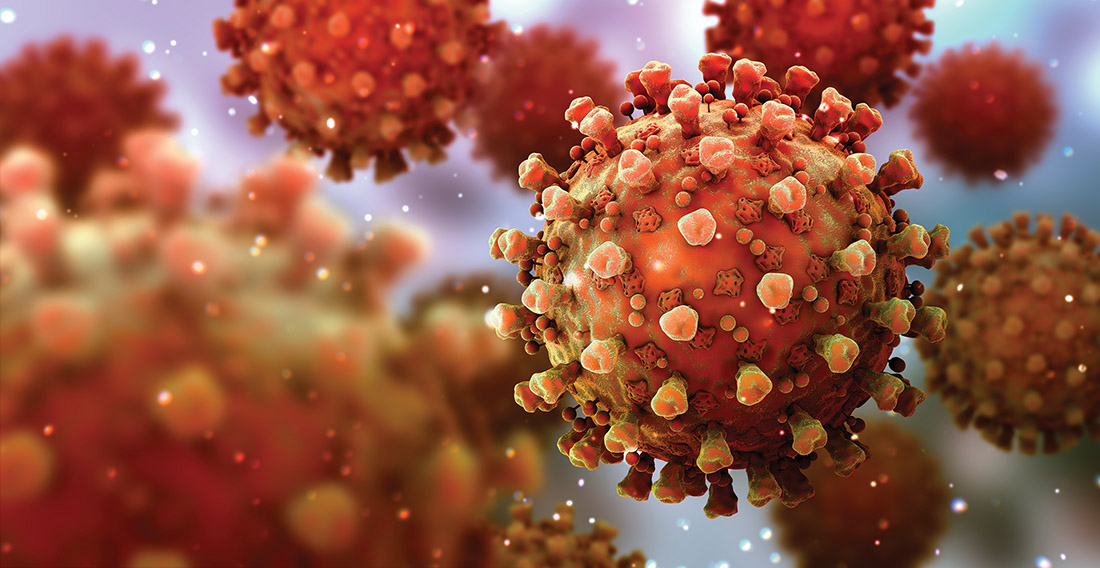
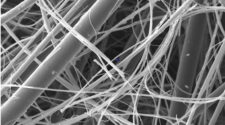
![Figure 1: Heat Exchanger Proventics GMBH.[22]](https://www.filtnews.com/wp-content/uploads/IFN_2_2024_crimpedmicrofiberyarns_Fig.-1-Heat-exchanger-225x125.jpg)

